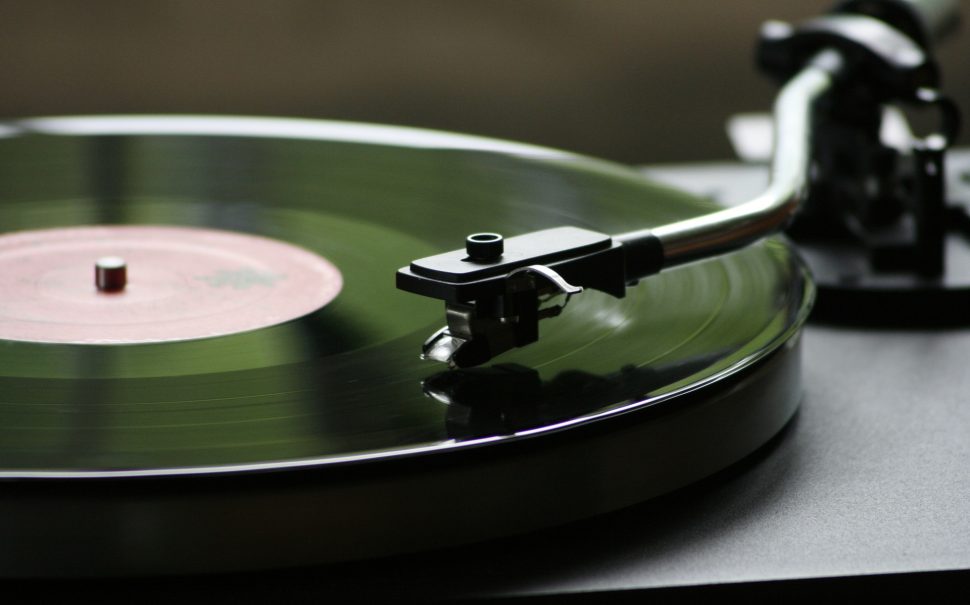The vinyl revival is well underway.
More than five million records were sold in the UK last year – a 30-year high, according to the British Phonographic Industry (BPI).
Vinyl sales have grown in each of the past 14 years, with the Entertainment Retailers Association (ERA) charting a 23.2% increase since 2021, with projections sales will rise even further in 2022.
And the increase in interest has sent soundwaves into Greater Manchester’s 29 record shops, who are reaping the benefits in the aftermath of the Covid-19 pandemic.
Wax and Beans – a record and coffee shop which opened in Bury in 2019 – is among those which has seen a rise in trading even in its short history.
Owner Ben Soothill said: “We had a standing start.
“We had no customers on day one, so the idea was always a record shop but we tried to hedge our bets a little bit.
“So we thought the wax and the beans is obviously the records and the coffee.”
In fact, the shop has been so successful that they recently moved to a bigger premises to cope with demand.
“We started off in the small shop in June 2019 not knowing if we were gonna get anyone through the door,” he said.
“We didn’t have any customers to start with but the support that the business has got now is incredible.
“We’ve just been getting busier month on month.”
So why the vinyl revival? There are numerous ways of charting the growth of vinyl using sales and analytics. But it’s less easy to find out why the format has enjoyed such a strong comeback, and it’s impossible to use data to find the answer.
One explanation could be that vinyl can also provide a more personal listening experience for fans, making consumers feel a more permanent connection to their favourite artists than they would have via streaming.
Andy Keating – label manager at Manchester-based record label and live promoter Scruff of the Neck – argues that physical records help to establish a close relationship between the two.
He said: “I always think the physical format is important in terms of the experience for the listener and the fan more than anything.
“There’s a sort of tangible experience with actually taking a record, putting it on the turntable, setting the speed, the arm going on, the crackle before it starts, and then turning it over at the halfway point.”
Andy also pointed out that the retro appeal of the medium could be a contributing factor in its success, with younger generations wanting in on the experience.
He said: “I think there’s almost like a faux nostalgia where people who weren’t around at the time of vinyl look back on their dad’s, or their grandad’s, or their mum’s collection and go ‘oh wow this is how my parents or my grandparents used to consume music’.”
While vinyl is enjoying something of a renaissance, streaming is king when it comes to the stats. The profits recorded from audio streaming in the UK last year were £147.2billion according to ERA, having grown considerably from the £90.9bn recorded in 2019. Estimates also suggested that UK citizens streamed an average of 2,342 tracks last year – around 159bn in total – which is around five days worth of music.
Andy feels that streaming is an indispensable tool for artists to grow and build a following.
“Streaming in certain sectors of the music industry is like a dirty word but it is the number one way the world consumes mustic,” he said.
“You may as well cease to exist if you don’t have a strong online presence.”
Andy also mentions that streaming can help to convert a fan who listens to an artist via streaming platforms into someone who will go on to buy vinyl. This is something Ben agrees with, citing the cost of vinyl as being a barrier for consumers.
Ben said: “Streaming’s a fantastic product. It’s not cheap to own a record collection, you have to be passionate about it.
“Because it’s (streaming) costing you next to nothing it frees up some disposable income to then go out and purchase this record that you’re really enjoying and that you really want to support the artist with.”
But Andy points out that for smaller artists, streaming can be unsustainable in terms of profits.
How much streaming platforms pay artists per 10,000 streams
| Platform | Amount per 10,000 streams (£) |
| Amazon Music Unlimited | £10.96 |
| Tidal | £5.63 |
| Apple Music | £5.56 |
| Deezer | £3.38 |
| YouTube | £2.66 |
| Spotify | £1.88 |
| Amazon Prime | £1.14 |
Most streaming platforms offer less than £10 per 1,000 streams, which is considerably less than the average price of an album on vinyl in the UK last year – which was £24.10.
Andy said: “If we’re looking at sales numbers and being able to springboard themselves up the charts. Being able to sell physical formats, of which vinyl is one, it helps level the playing field in terms of sales.
“From how much an artist and subsequently their label is paid for streams is absolutely nothing compared to what a vinyl record can be sold or marked up at.”
Record-shop owner Ben also points out that physical album sales can have a considerable influence on chart success.
Ben said: “We’re one of only about 30 shops in the UK that are chart tracking.
“So if a band can come down and sell 100 copies of an album then it’s a win-win and it ticks a lot of boxes.”
So what happens next and will the spinning discs keep the LP craze going? Vinyl looks set to become the dominant physical format in 2022, eclipsing CDs. In 2021, profits from vinyl in the UK amounted to £135.6million, compared to £150.1m for CDs. Vinyl also made up 47.1% of all profits from physical album sales.
But the two mediums have been trending in opposite directions in terms of growth. Vinyl profits increased by 23.2% from £110.1m in 2020, whereas profits from CDs saw a sizable decrease from £156.2m in 2020 and £217m in 2019.
Music journalist Steve Mascord thinks younger collectors are the key to ensuring vinyl stays relevant.
Steve, who is based in London and has written for publications such as Kerrang!, said: “I can’t see a single reason why it would go backwards given that younger people are now interested.
“I can’t imagine people are gonna get bored of it.
“The most important thing is that younger people are getting on board with vinyls and if that’s the case then the growth will continue.”
More than a nostalgia factor, which is closely associated with the vinyl revival, Steve thinks that so long as the format is perceived as cool then people will continue to buy.
Steve said: “There’s a cool factor and I think that’s a good thing.
“And the record companies and bands are hoping that it stays cool.
“It shows that you’re seriously into music, and it might get to the point where if you don’t own a turntable people will say that you’re not really a serious music fan.”
There is evidence to suggest that collectors are getting younger. A survey from ERA suggested that two-thirds of record store owners saw an increase in younger people buying vinyl, which is positive news for the format.
Music lovers will have to wait and see whether this growth comes to fruition or whether it’s just noise. But the good news for record collectors is that vinyl doesn’t seem to be going away (again) any time soon. Which is no doubt music to their ears.




